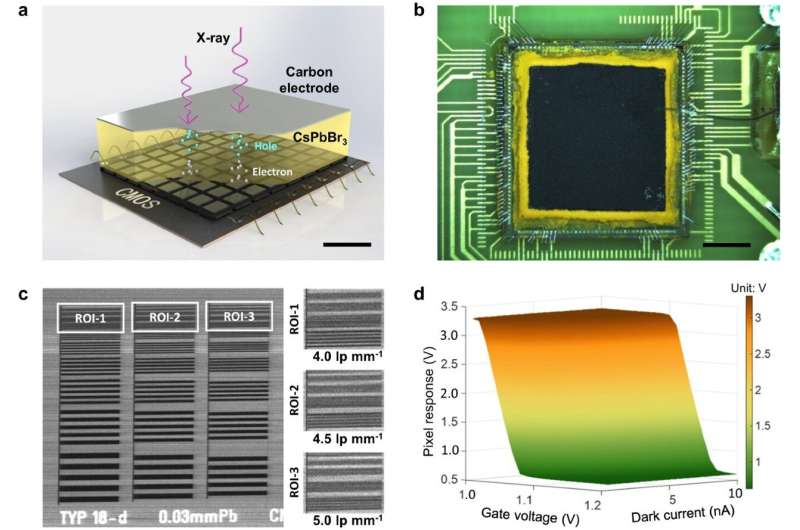This article has been reviewed according to Science X's editorial process and policies. Editors have highlighted the following attributes while ensuring the content's credibility:
fact-checked
peer-reviewed publication
trusted source
proofread
Researchers develop perovskite X-ray detector for medical imaging

Shenzhen Institutes of Advanced Technology (SIAT) of the Chinese Academy of Sciences, in collaboration with researchers at Central China Normal University, have developed a high-performance perovskite X-ray complementary metal-oxide-semiconductor (CMOS) detector for medical imaging.
The study was published in Nature Communications on Feb. 21.
X-ray imaging is vital for the diagnosis and treatment of cardiovascular and cancer diseases. Direct-conversion X-ray detectors made of semiconductor materials exhibit superior spatial and temporal resolution at lower radiation doses compared to indirect-conversion detectors made of scintillator materials. However, the currently available semiconductor materials, such as Si, a-Se, and CdZnTe/CdTe, are not ideal for general X-ray imaging due to their low X-ray absorption efficiency or high costs.
Perovskite is a promising alternative to conventional semiconductor materials. However, the feasibility of its combination with high-speed pixelated CMOS arrays is still unknown.
To address this issue, researchers developed a direct-conversion X-ray detector fabricated with a 300 μm thick inorganic CsPbBr3 perovskite film printed on a dedicated CMOS pixel array.
Researchers found that the screen-printed thick CsPbBr3 film has a high μτ product of 5.2×10-4 cm2 V–1, a high X-ray detection sensitivity of 15,891 µC Gyair–1 cm–2, and a low dose detection limit of 321 nGyair s–1.
Experimental X-ray 2D imaging results showed that the proposed perovskite CMOS detector can achieve very high spatial resolution (5.0 lp mm-1, hardware limit is 6.0 lp mm-1) and low-dose (260 nGy) imaging performance.
Moreover, 3D CT imaging was also validated with the proposed detector at a fast signal readout speed of 300 fps.
"Our work shows the potential of lead halide perovskites in revolutionizing the development of state-of-the-art X-ray detectors with significantly enhanced spatial resolution, readout speed, and low-dose detection efficiency," said Prof. Ge.
"This paves the road for medical X-ray imaging applications to become gentler and safer in the future."
More information: Yanliang Liu et al, Dynamic X-ray imaging with screen-printed perovskite CMOS array, Nature Communications (2024). DOI: 10.1038/s41467-024-45871-2
Journal information: Nature Communications
Provided by Chinese Academy of Sciences




















